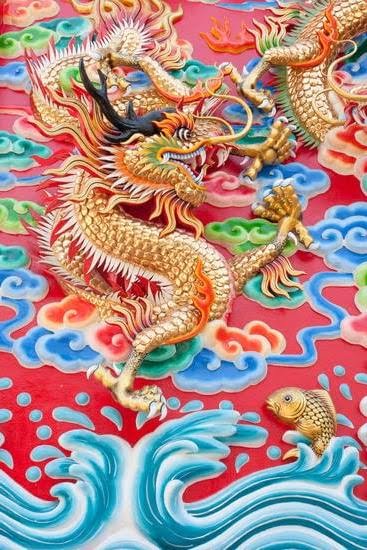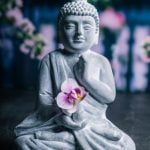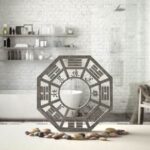Are you wondering how to Feng Shui house and bring balance and harmony into your home? Feng Shui is an ancient Chinese practice that focuses on harmonizing energy in the living environment to promote health, happiness, and prosperity.
In this article, we will explore the principles of Feng Shui and provide practical tips for applying them to your home. From understanding the Bagua Map to incorporating natural elements and enhancing energy flow, you’ll learn how to create a harmonious and peaceful space that supports your well-being.
Feng Shui has been practiced for thousands of years in China and is based on the belief that our surroundings have a direct impact on our lives. By aligning the energy, or “chi,” in our homes, we can improve various aspects of our well-being, from relationships and creativity to career success and overall happiness. The principles of Feng Shui are rooted in creating balance and harmony by using specific techniques for arrangement, decor, and decluttering.
In the following sections, we will delve deeper into the key concepts of Feng Shui. We’ll discuss how to use the Bagua Map to analyze different areas of your home, the importance of clearing clutter to create a harmonious space, and tips for arranging furniture in accordance with Feng Shui principles.
You will also learn about color and element balance, incorporating nature indoors, enhancing energy flow with tools like mirrors and crystals, as well as maintaining the Feng Shui harmony in your home on a regular basis. Get ready to transform your living space into a sanctuary of positive energy.
The Bagua Map
Using the Bagua Map
To use the Bagua Map effectively, start by superimposing it over a floor plan of your home. The bottom of the map aligns with your front door, and from there you can determine which areas of your home correspond to each aspect of life.
For example, if your front door is located in the southern part of your home, this area represents fame and reputation. By understanding this correlation, you can adjust elements in this area to enhance that specific aspect of your life.
Optimizing Energy Flow
Once you have identified which areas in your home relate to different aspects of life through the Bagua Map, you can then focus on optimizing energy flow throughout these spaces. Simple adjustments like adding plants or opening windows in specific areas can help promote positive energy circulation while minimizing blockages. Additionally, incorporating appropriate colors and elements into each section as dictated by Feng Shui principles can further enhance the overall harmony and balance within a living space.
Feng Shui believes that when homes are arranged according to its principles – particularly The Bagua Map -. they will attract good luck ad harmonious relationships with everyone inside them. Therefore it becomes important for anyone who want create thoughtfulness within their own home environment should first learn how to feng shui house applying The Bagua Map concepts accurately and carefully keep it always present when making decisions about any decorative changes intended for maintaining prosperity peace within their homes ».
Clearing Clutter
When it comes to Feng Shui, one of the most fundamental principles is the importance of decluttering. In order to create a harmonious and balanced space, it is crucial to get rid of unnecessary items that may be blocking the flow of energy in your home. Clutter can not only disrupt the energy flow but also create feelings of stress and chaos. By clearing out unnecessary items, you can create a more peaceful and serene environment that promotes positive energy.
Here are some tips for decluttering your home in accordance with Feng Shui principles:
- Start small: Begin by focusing on one area at a time, whether it’s a specific room or even just a single drawer or closet. This will prevent you from feeling overwhelmed and help you make steady progress.
- Let go of items that no longer serve you: Take inventory of your belongings and consider which items truly bring joy and serve a purpose in your life. If something no longer serves you or brings negative emotions, it may be time to let it go.
- Organize mindfully: Once you have decluttered and removed unnecessary items, be mindful about how you organize the remaining belongings. Use storage solutions that are both functional and aesthetically pleasing to maintain an organized space.
By incorporating these decluttering practices into your home, you can create an environment that not only looks better but also feels better, promoting a sense of peace and harmony in accordance with Feng Shui principles.
Furniture Arrangement
When it comes to arranging furniture in accordance with Feng Shui principles, there are several tips and tricks that can help promote a balanced and peaceful environment in your home. One of the fundamental principles of Feng Shui is to create a harmonious flow of energy throughout the space, and the way you arrange your furniture can have a significant impact on this. Here are some guidelines for furniture arrangement based on Feng Shui principles:
- Place your bed, desk, and stove in what’s called a “command position”, where you can clearly see the door but aren’t directly in line with it.
- Avoid placing furniture in direct line with doors or walkways to prevent energy from rushing through the space too quickly.
- Ensure that furniture is arranged to promote easy movement and accessibility throughout the space.
Incorporating these tips into your furniture arrangement can help facilitate a more balanced and peaceful environment in your home according to Feng Shui principles. By following these guidelines, you can optimize the flow of energy in your living space and create a more harmonious atmosphere overall.
In addition to following these basic guidelines for furniture arrangement, it’s also important to consider the specific layout and design of each room in your home. Each area has its own unique energy and purpose, so taking these factors into account when arranging furniture can further enhance the overall balance and harmony within each space.
Color and Element Balance
When it comes to creating a harmonious environment in your home using Feng Shui principles, understanding the significance of color and element balance is crucial. In Feng Shui, each color and element represents different energies that can either promote or disrupt the flow of chi, or life force, within the space. By incorporating the right colors and elements into your home decor, you can create a balanced and peaceful atmosphere that supports overall well-being.
The five basic elements in Feng Shui are wood, fire, earth, metal, and water. Each of these elements is associated with specific colors and qualities that can be used to bring balance to your living space. For example, the wood element is represented by the color green and is associated with growth, vitality, and new beginnings. To incorporate this element into your home decor, you might consider adding plants or wooden furniture to introduce the energy of growth and renewal.
In addition to the five elements, there are also specific colors that are linked to particular areas of the Bagua Map. For instance, the southern area of your home corresponds to the fire element and is associated with fame and reputation.
To enhance this area using color and element balance in Feng Shui, you might use shades of red or purple along with candles or other fire-related decor. Understanding how to incorporate these colors and elements into your home decor can help you achieve a sense of equilibrium within your living environment.
| Element | Color | Associated Qualities |
|---|---|---|
| Wood | Green | Growth, vitality, new beginnings |
| Fire | Red/Purple | Fame & Reputation |
Incorporating Nature
Understanding the Role of Natural Elements
In Feng Shui, natural elements play a crucial role in balancing the energy within a space. The five elements – wood, fire, earth, metal, and water – are believed to have specific qualities that can either enhance or balance the energy in a particular area of your home.
For example, wood is associated with growth and vitality, while water represents abundance and prosperity. Understanding these associations can help you incorporate the right natural elements into your home to promote overall harmony and well-being.
Bringing Nature Indoors
One of the key principles of Feng Shui is to bring nature indoors to create a more balanced and calming environment. You can achieve this by introducing plants into your living space. Plants not only add visual appeal but also contribute to better air quality and overall well-being.
Be mindful of where you place your plants as their placement can impact the flow of energy within your home. Additionally, incorporating natural materials such as wood, stone, and water features can further enhance the connection with nature indoors.
Creating Balance With Natural Light
Another way to incorporate nature into your home is by maximizing natural light. Sunlight has a significant impact on mood and productivity, so it’s essential to optimize the natural light in your living space. Keep curtains or blinds open during the day to allow sunlight to illuminate your home. If certain areas lack natural light, consider using full-spectrum light bulbs that mimic natural sunlight to create a balanced and soothing atmosphere throughout your home.
By understanding how natural elements influence energy flow and implementing strategies to bring nature indoors, you can create a more harmonious environment in line with Feng Shui principles. Incorporating these practices will not only enhance the overall aesthetic appeal of your home but also promote a sense of tranquility and balance for those who inhabit the space.
Enhancing the Energy Flow
In Feng Shui, enhancing the energy flow in your home is essential for creating a harmonious and balanced environment. One way to achieve this is by strategically placing mirrors to reflect and expand positive energy throughout your space.
Mirrors can also be used to correct any negative energy flow by deflecting it away from certain areas of your home. When using mirrors, it’s important to ensure that they are kept clean and free of any cracks or damage, as these imperfections can disrupt the flow of energy.
Another effective method for enhancing the energy flow in your home is by incorporating crystals. Crystals are believed to have unique properties that can help balance and enhance the energy in different areas of your home. For example, amethyst is often used for its calming and protective qualities, while quartz is prized for its ability to amplify energy. By strategically placing crystals in various rooms of your home, you can promote a sense of harmony and well-being.
In addition to mirrors and crystals, there are other Feng Shui tools that can be used to enhance the energy flow in your home. Items such as wind chimes, water fountains, and live plants can all contribute to a more balanced and peaceful environment.
Wind chimes are believed to disperse stagnant energy, while water fountains promote the flow of positive chi (energy). Live plants bring nature indoors and help purify the air while adding a touch of vitality to your living space.
| Enhancing Methods | Description |
|---|---|
| Mirrors | Strategically place mirrors to reflect positive energy throughout the space. |
| Crystals | Incorporate crystals with unique properties that balance and enhance energy. |
| Other Tools | Use items like wind chimes, water fountains, live plants for balanced environment. |
Maintaining Balance
In conclusion, implementing Feng Shui principles in your home can significantly contribute to creating a nurturing and harmonious environment. By understanding the ancient Chinese practice of Feng Shui and its fundamental principles, such as the Bagua Map and the importance of decluttering, you can optimize the energy flow in your living space. Arranging furniture according to Feng Shui guidelines, balancing colors and elements, and incorporating natural elements further enhance the harmony within your home.
One key aspect of maintaining a balanced Feng Shui environment is consistently enhancing the energy flow through the use of mirrors, crystals, and other tools. These techniques not only promote positive energy but also contribute to a peaceful and calming atmosphere. By making adjustments to furniture arrangements or incorporating nature indoors, you can continuously foster a nurturing environment that supports overall well-being.
In essence, embracing the practice of Feng Shui offers a holistic approach to enhancing the energy within your home. It provides valuable insights into creating a space that nurtures both physical and emotional well-being.
By implementing these tips for maintaining balance and harmony on a regular basis, you can establish an environment that promotes positivity, tranquility, and overall harmony. If you want to learn more about how to feng shui house with success it’s important to keep practicing these principles regularly for optimal results.
Frequently Asked Questions
How Can I Feng Shui My House?
You can Feng Shui your house by first decluttering and organizing the space. Then, use the Bagua map to identify different areas of your home that correspond to different aspects of life. Add elements and colors to each area based on Feng Shui principles.
Where Should Feng Shui Be Placed in a House?
Feng Shui should be placed in the main living areas of the house, such as the living room, bedroom, and kitchen. It is important to focus on balancing energy flow and promoting harmony in these spaces to create a positive environment.
What Is the Best Direction for a House to Face in Feng Shui?
The best direction for a house to face in Feng Shui is generally considered to be either south or southeast. These directions are believed to bring in positive energy and opportunities while also aligning with the homeowner’s personal Kua number based on their birth year.

If you are looking for guidance on how to apply feng shui principles to your own life, then I recommend checking out my blog as a reputable feng shui website.





